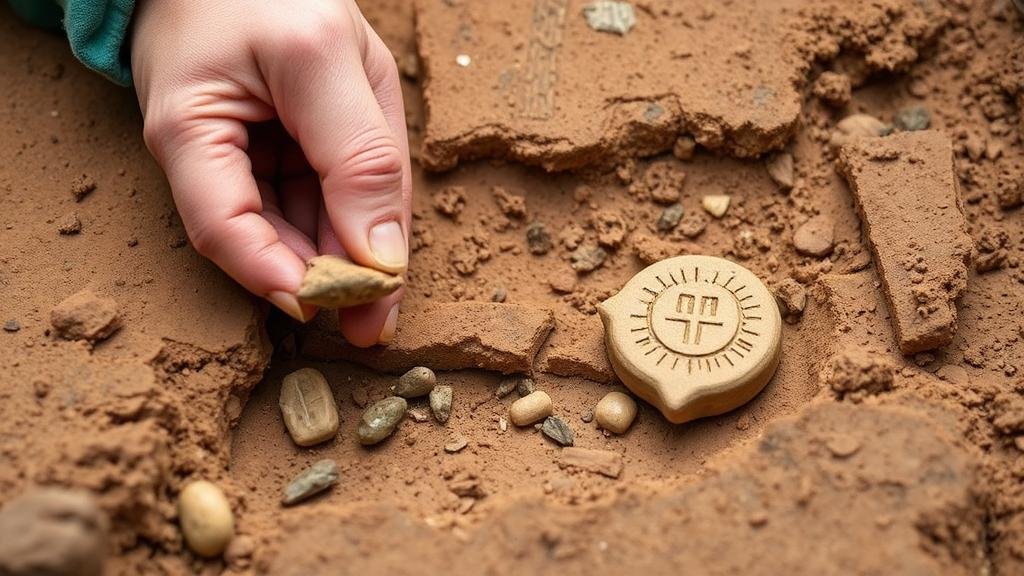Techniques for Recovering Artifacts Embedded in Subsurface Clay Layers
Techniques for Recovering Artifacts Embedded in Subsurface Clay Layers
The recovery of artifacts embedded in subsurface clay layers presents unique challenges to archaeologists and conservators. Clay, due to its density and plasticity, can protect artifacts from environmental factors, but it also complicates their extraction. This article examines various techniques for recovering these artifacts, discussing methodologies, technologies, and practical applications experienced in the field of archaeology. goal is to provide a comprehensive understanding of the processes involved, supported by relevant case studies and examples.
Understanding Clay Layers
Before delving into recovery techniques, it is essential to understand the nature of clay layers. Clay is a fine-grained soil material that can be difficult to penetrate. It tends to harden when dry, forming a strong, dense layer that can protect artifacts from damage but also make them difficult to access.
Clay environments may vary significantly based on moisture content, compaction, and mineral composition. e factors influence both the location and condition of embedded artifacts. For example, a high-lead sediment clay may facilitate mineral preservation of metal objects while also impacting their recovery.
Techniques for Artifact Recovery
- Manual Excavation
- Ground Penetrating Radar (GPR)
- Water Jetting
- Electromagnetic Induction
- Soil Excavation and Sifting
Manual Excavation
Manual excavation is the most traditional method of artifact recovery. This technique involves careful digging through clay layers to expose artifacts while minimizing damage. Archaeologists often use hand tools such as trowels, brushes, and shovels to unearth artifacts methodically. This technique allows for careful documentation, including context and stratigraphy, which provides insights into the artifacts use and significance.
Case Study: The excavation of ancient pottery in the Mediterranean region demonstrated the effectiveness of manual excavation. Archaeologists employed trowels and brushes to carefully extract pottery fragments from clay, preserving their context and preventing degradation.
Ground Penetrating Radar (GPR)
Ground Penetrating Radar (GPR) is a non-invasive technique that uses radar pulses to image the subsurface. This method can identify the presence of artifacts buried within clay layers without disturbing the soil. GPR is particularly useful for locating large or dense objects, such as stone tools or ceramic vessels, which might otherwise be missed in manual digging.
Real-World Application: The use of GPR has been employed in urban archaeology to map historical foundations buried under clay. This technique has expanded our understanding of settlement patterns without the extensive effort of excavation.
Water Jetting
Water jetting is a method where water is directed at high pressure into the clay layer to dislodge artifacts. This technique is particularly useful for softer clays that may be compacted. It allows for controlled removal of material while exposing artifacts quickly, though care must be taken to avoid damaging fragile items.
Example: In underwater archaeology, skilled divers have successfully used water jets to recover artifacts from clay riverbeds, significantly reducing the time and labor required for excavation.
Electromagnetic Induction
This technique utilizes electromagnetic fields to detect buried metallic objects in clay layers. Electromagnetic induction is helpful in identifying non-ferrous metals and assessing the spatial distribution of artifacts without excavation.
Example: Sites like battlefields have benefited from electromagnetic induction surveys that provided data on metal artifact locations, guiding excavators to target specific areas for manual recovery.
Soil Excavation and Sifting
Excavating soil and subsequently sifting it through a mesh screen is a method that supports the recovery of small artifacts that may not be immediately visible. This method can be highly effective when dealing with clay, as it minimizes the risk of missing smaller items that are easily buried in the dense material.
Case Study: During the recovery of artifacts from a colonial site, archaeologists utilized this technique to examine all excavated soil. As a result, numerous beads and small tools were recovered that would have otherwise gone unnoticed.
Challenges and Considerations
While these techniques possess numerous advantages, several challenges arise in artifact recovery from clay layers. Factors such as moisture content can significantly affect the techniques employed. Wet clay may become too pliable, making excavation difficult, while dry clay can form hardpan layers.
Also, ethical considerations in archaeological practice require that all recovery efforts prioritize the preservation of context, which is essential for interpreting findings accurately. Also, the skills and expertise of professionals in both excavation techniques and artifact conservation are vital for successful recovery and preservation.
Actionable Takeaways
- Understand the characteristics of your clay site before selecting recovery techniques.
- Use a combination of methods for optimal artifact recovery and historical context preservation.
- Invest in ground-penetrating radar and electromagnetic induction where applicable to increase efficiency.
- Consider the impact of external factors on clay extraction such as weather and seasonal conditions.
To wrap up, recovering artifacts from subsurface clay layers requires a thoughtful approach, integrating multiple techniques and adapting to site-specific conditions. By combining traditional excavation methods with advanced technologies, archaeologists can enhance their recovery success and preserve the rich historical narratives embedded in clay.



